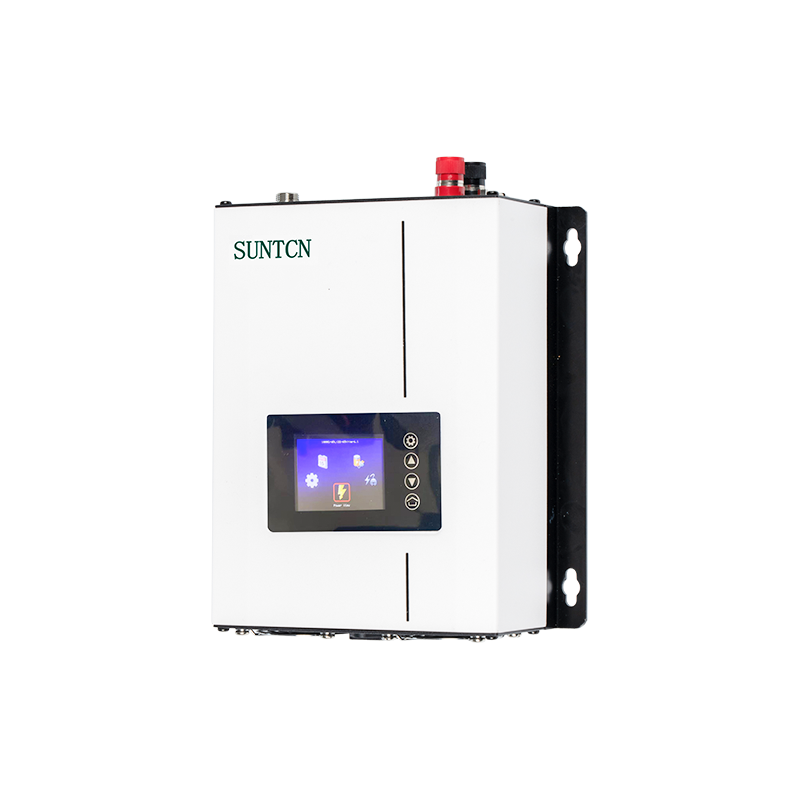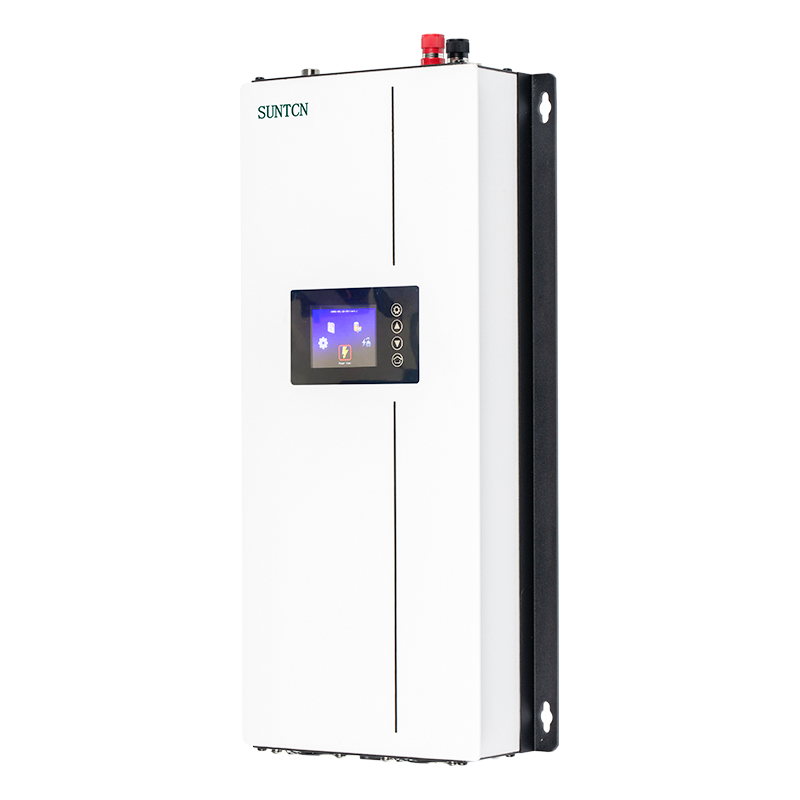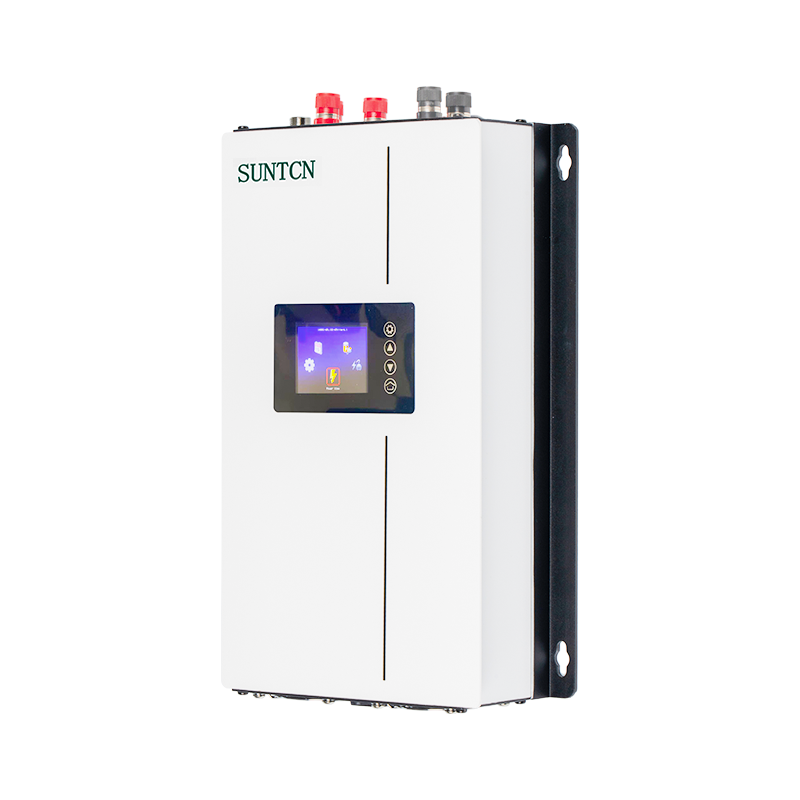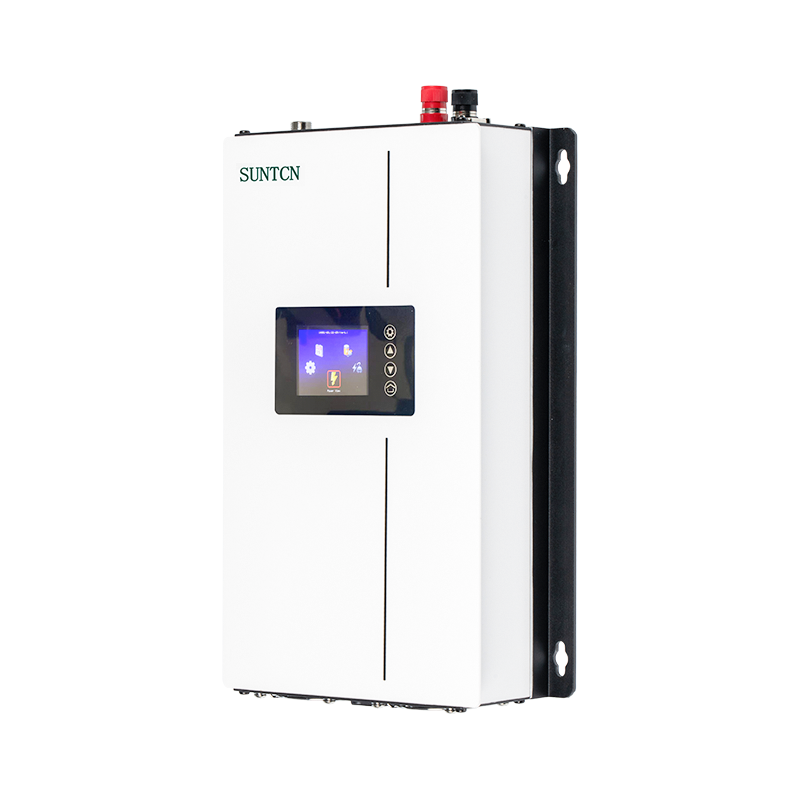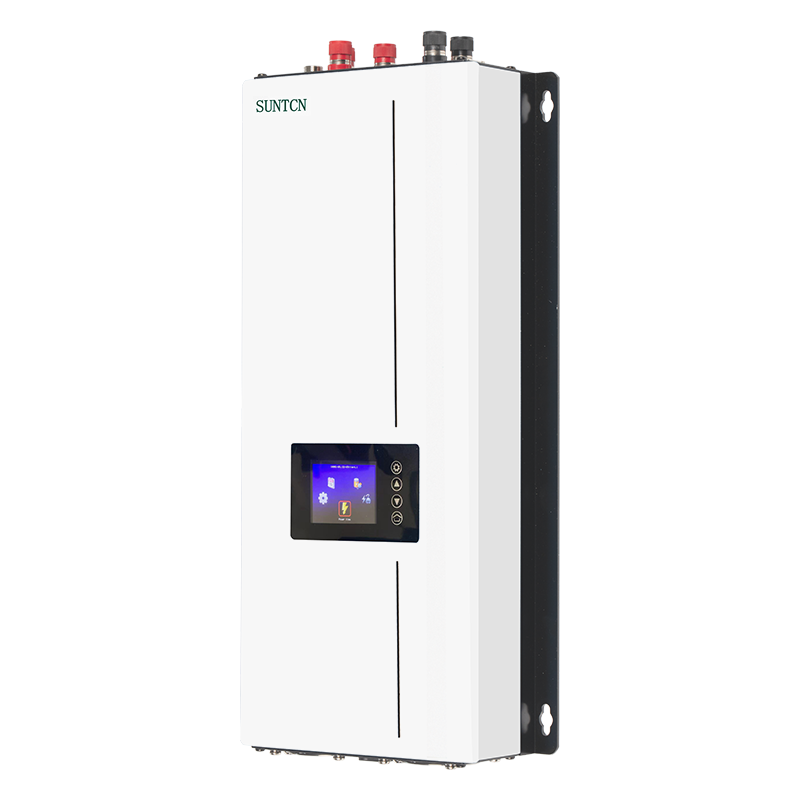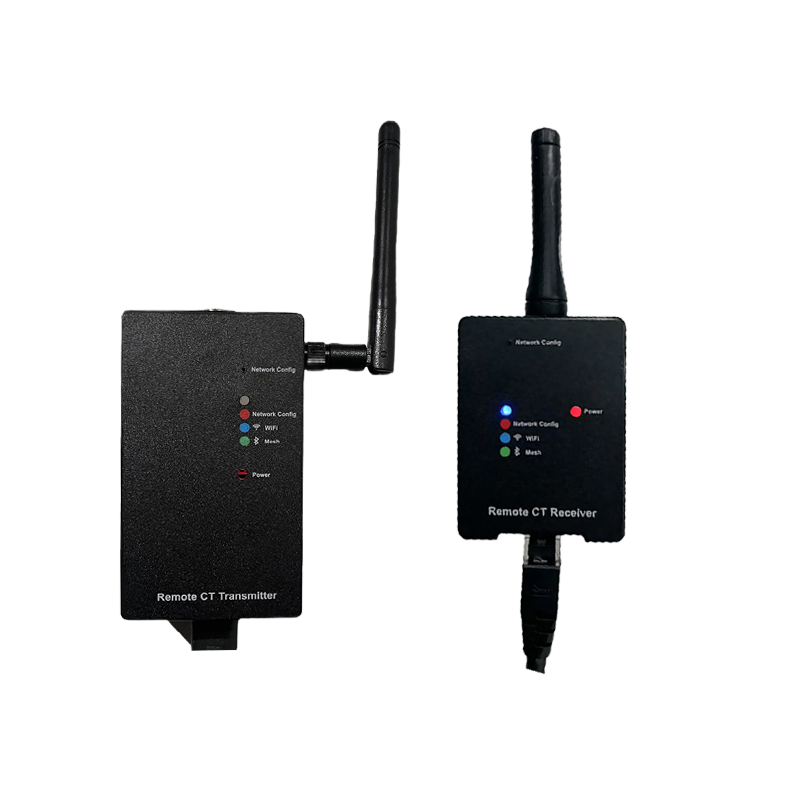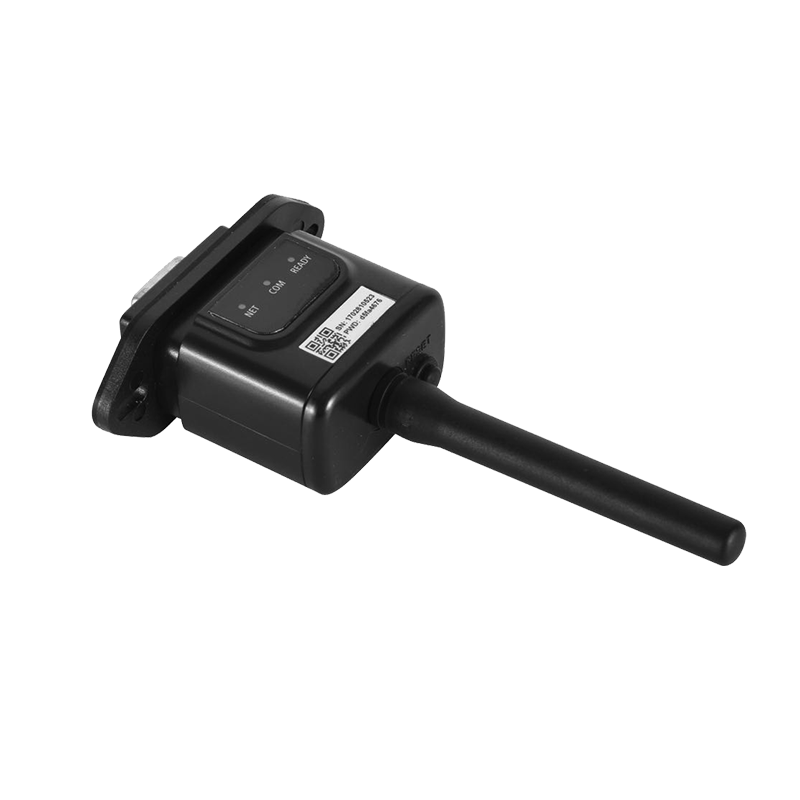Grid Tie Inverter is a key component in solar power generation system, which converts the DC power generated by solar photovoltaic panels into AC power and transmits it to the grid. Grid-tied inverter not only improves the overall efficiency of solar energy system, but also achieves seamless connection with the grid, allowing users to sell excess power to the grid or obtain power from the grid during peak power demand.
Grid-tied inverter first converts the DC power generated by solar panels into AC power through the inverter circuit. During this process, the inverter adjusts the voltage to a voltage level that matches the grid (such as 110V or 220V).
Grid-tied inverter ensures that the output AC power is synchronized with the phase, frequency and voltage of the grid by monitoring the voltage and frequency of the grid. This synchronization process is essential for the safe and stable operation of the grid-tied system, avoiding grid interference or damage that may be caused by phase differences.
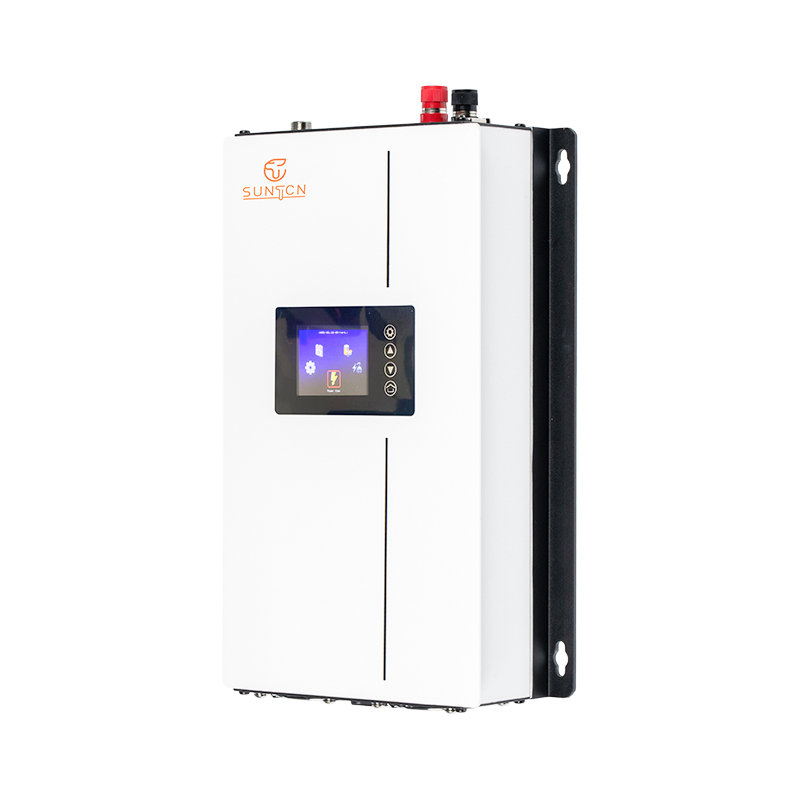
In order to maximize the output of solar panels, grid-tied inverters are usually equipped with maximum power point tracking function. MPPT technology improves power generation efficiency by adjusting the operating voltage of the panel so that it always operates at the highest efficiency point.
Grid-connected inverters connect solar power generation systems to the grid, transfer excess power to the grid, and maximize energy utilization. This not only improves the economic benefits of solar energy systems, but also provides users with a way to reduce electricity bills.
By integrating solar power generation into the grid, grid-connected inverters reduce dependence on traditional fossil fuel power generation, help reduce greenhouse gas emissions, support the use of clean energy, and promote sustainable development.
Grid-connected inverters can provide additional power supply to the grid during peak power demand periods, relieve grid pressure, and help stabilize the power supply quality of the grid. In addition, some advanced grid-connected inverters also have grid support functions, which can provide reactive power support when the grid voltage is unstable, further improving the stability of the grid.
Modern grid-connected inverters are equipped with a variety of protection mechanisms, such as overvoltage, undervoltage, overload, and islanding effect detection, to ensure that they can automatically disconnect from the grid under abnormal conditions and protect the safety of the solar system and the grid.
When choosing a grid-connected inverter, the total power capacity of the solar power generation system must be considered first. The rated power of the inverter should match the maximum output power of the solar panel to ensure efficient operation of the system.
The conversion efficiency of the inverter is a key indicator that affects the overall performance of the solar power generation system. An efficient inverter can convert more solar energy into usable electricity, so when choosing, you should pay attention to the efficiency parameters of the inverter. Usually, an efficiency of more than 95% is considered to be a high level.
The grid standards of different countries and regions are different. The selected grid-connected inverter should comply with the local grid specifications, including voltage, frequency and wiring methods. In addition, the inverter should have grid certification, such as UL, IEC, VDE, etc., to ensure compatibility and safety with the local grid.
For solar energy systems with irregular roofs and partial shading, choosing a grid-connected inverter with multiple MPPT (maximum power point tracking) channels can effectively improve the power generation efficiency of the system under different lighting conditions.
Advanced grid-connected inverters usually have remote monitoring and data communication functions. Users can monitor the operating status of the solar power generation system in real time through mobile phones or computers, detect and troubleshoot faults in time, and improve the reliability of the system.
With the increasing global demand for clean energy, grid-connected inverters will become a key component in solar power generation systems, providing technical support for the widespread application of renewable energy and the development of smart grids. In the future, grid-tied inverters will develop in a more efficient, intelligent and reliable direction, including:
Introducing artificial intelligence and machine learning technologies to optimize the operating parameters of the inverter, improve power generation efficiency, and achieve more accurate grid support.
Combined with energy storage systems, achieve a balance in time and space for solar power generation, and enhance the peak-shaving and backup capabilities of solar energy systems in the grid.
Achieve deep interaction with smart grids, participate in grid dispatching and demand response through two-way communication technology, and provide support for the stable operation of the grid.
Grid Tie Inverter is not only a bridge connecting solar energy systems and grids, but also an important technology for achieving sustainable energy development. In future development, grid-tied inverters will continue to play a key role in promoting the popularization and application of clean energy around the world.

 English
English Español
Español Deutsch
Deutsch